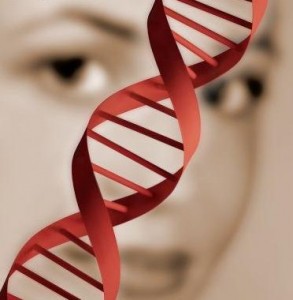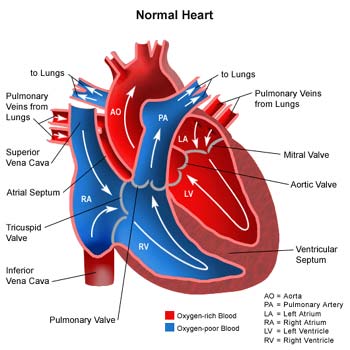Heart disease
 Once you’ve been through menopause and the levels of estrogen in your blood have decreased, your risk for heart disease increases. Protecting your heart helps safeguard your old age.
Once you’ve been through menopause and the levels of estrogen in your blood have decreased, your risk for heart disease increases. Protecting your heart helps safeguard your old age.
Heart disease is the world’s biggest killer. Although a woman’s risk of heart disease, also known as coronary disease, does not reach the same level as a man’s until she is 75, it’s still a leading cause of death for women. In heart disease, the arteries that supply your heart with oxygen and nutrients become narrowed by atherosclerosis (commonly known as “hardening of the arteries”). This restricts the supply of blood and oxygen to your heart. Unfortunately, for many women the first indication that something’s wrong is a heart attack.
It’s important to appreciate that heart attacks rarely strike suddenly. In the great majority of cases, your heart and circulation will have been unhealthy for a long time, even if you didn’t know it. Heart disease is a degenerative condition: It builds up over a number of years. In addition, most experts agree overwhelmingly that heart disease can be caused (and prevented) by your diet and lifestyle. If your diet and lifestyle are healthy, your risk of developing heart disease decreases significantly, compared with a woman whose diet and lifestyle are unhealthy.
Causes
Most of us know the main risk factors for heart disease already: a lack of exercise coupled with a diet that is high in saturated fat and sugar, being overweight or overstressed; smoking; diabetes; high blood pressure, or a family history of heart disease; and stroke. Essentially, of those risk factors within your control, leading an unhealthy, sedentary life puts a strain on your heart and potentially shortens your life.
Increased risk for coronary disease is also associated with the process of aging, and there’s also a relationship between heart health and a woman’s midlife transition through menopause. Before menopause, a woman’s hormones (especially estrogen) offer some protection for her heart and blood vessels.
To understand how you can reduce your susceptibility to heart disease, it’s important to look in more detail at the risk factors within your control.
Understanding Cholesterol
Although the word cholesterol has negative associations for most of us, cholesterol has a positive function in your body as well as a negative one. Cholesterol is a type of fat that exists in all your cell membranes. Eighty percent of cholesterol is produced by your liver, and only 20 percent comes directly from your diet. It’s essential to the healthy functioning of your body, and you could not live without it. Cholesterol is the starting point for many of your hormones, including the sex and stress hormones; and it’s vital for nerve transmission, the formation of vitamin D (which you need for healthy bones), and the formation of bile. Problems occur only when you take in excess cholesterol from foods that are naturally high in cholesterol, or when your body starts to produce too much.
You may be surprised to learn that foods with fats do not have to contain cholesterol; it’s found only in animal products (meat, dairy products, butter, and eggs). Vegetable products are cholesterol-free: An avocado and olive contain fat, but neither contains cholesterol. Furthermore, foods such as shellfish contain very little fat but a high level of cholesterol, and nut butters (such as peanut butter), which we often perceive to be unhealthy, are high in fat but low in cholesterol.
In order for cholesterol to travel in the bloodstream, it has to combine with a protein, after which it’s known as a lipoprotein. There are two main types of lipoprotein that carry cholesterol around your body. Low-density lipoproteins (LDL, or “bad” cholesterol) are responsible for carrying cholesterol via the arteries to the cells of your body. High-density lipoprotein (HDL, or “good” cholesterol) collects cholesterol from the tissues and returns it t the liver for disposal. When you have high levels of LDL, cholesterol can deposit on damaged and inflamed arterial walls. These deposits, which also consist of saturated fats and calcium (that’s why cardiologists talk about calcification of arteries), are called arterial plaque or atheroma. These cause atherosclerosis (hardening), which can lead to blocked arteries and, as a result, high blood pressure.
Checking your cholesterol
To check your cholesterol, your doctor will give you what’s known as a “lipid” test. You need to know not only your total cholesterol level but also the separate levels of LDL and HDL (so that you know how much of your cholesterol is good and how much is bad). You also need to know your level of triglycerides (blood fats) because high levels of these have been linked to a higher risk of strokes and heart disease. Make sure you haven’t eaten or drunk anything (except water) from 10pm the night before your tests.
How your heart works

About the size of your fist, your heart lies just to the left of your breastbone and is a complicated pump responsible for circulating blood, oxygen, and nutrients through your body. It’s divided into four chambers: The right atrium and left atrium are the upper chambers of the heart, and the right ventricle and left ventricle are the lower chambers. The heart muscle contracts in two stages to squeeze blood out of the heart. This is known as systole. When the heart relaxes – known as diastole – blood fills up the heart again, and the whole process (which takes a fraction of a second) is repeated.
The heart has arteries that carry blood away from the heart. Capillaries (small blood vessels) connect arteries to veins. The veins then carry blood back to the heart. Heart disease can occur when arteries clog up with plaque.
Cholesterol and iron
Generally, your body needs iron for energy and to nourish your muscle cells. Without good levels, you’ll become anemic, which can cause you to feel tired all the time. However, having too much iron in your system and supplementing with iron can also be bad for you. Iron oxidizes LDL “bad” cholesterol; only once it’s oxidized does LDL seem to damage the arteries.
The fact that after menopause you’ll no longer have periods means that iron can build up in your system (you lose iron when you bleed). For this reason, it is recommended that you have regular blood tests to asses your iron levels, as well as the tests to establish your levels of cholesterol. Take iron supplements only if a blood test reveals that your blood levels are low. Many breakfast cereals are fortified with iron – avoid eating these after menopause, too. (however, don’t’ try to cut iron-rich foods out of your diet).
Your Diet
Quite simply, the best thing you can do for your heart is to eat a healthy, balanced diet. It’s especially important to increase your intake of oily fish, nuts, seeds, and oils – because these foods are good sources of essential fatty acids (EFAs), which are known to prevent heart disease. The omega-3 fish oils are particularly important because they not only help lower bad cholesterol (LDL) and increase the levels of good cholesterol (HDL). Phytoestrogens are another food group that has this effect on LDL and HDL. They have the added benefit of helping to lower your body’s levels of triglycerides (blood fat).
Try to boost your intake of antioxidants which are found in brightly colored fruits and vegetables. These important nutrients reduce your risk of heart disease by attacking the harmful free radicals that cause cell damage in your body. If you have a family history of heart problems, take a good antioxidant supplement.
Fats and your heart
There are two kinds of fat that are particularly bad for your heart health.
Saturated fat Regardless of your age and time of life, you should try to reduce your intake of foods that contain saturated fat, which as animal products and deep-fried foods, which clog up your arteries.
Trans fats For a healthy heart, you need to avoid trans fats altogether. These harmful fats, found in hydrogenated products such as margarine, as well as in ready-made meals, cookies, and other processed foods, can’t be properly broken down in the body, so they remain in the system, like a sort of plastic. Increasing your consumption of trans fats by only two percent can increase your risk of heart disease by a massive 30 percent overall.

